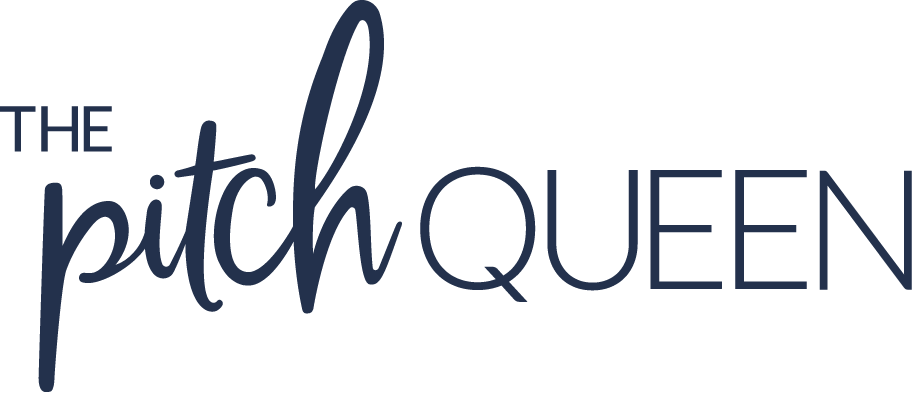
You make your pitch. You wait with anticipation. You’re sure that you’ve sold your product, your service, or yourself with such confidence that the client will be gnashing at the bit to say “yes.”
But then they say, “No, thanks.”
It’s a sinking moment for any entrepreneur. Hearing the dreaded NO. Maybe they tell you, “I don’t know, let me think about it.” Or even worse, “It’s too expensive.”
So what happened? What did you do wrong?
When it comes to the reason behind the customer saying, “no”, the variables are many. Maybe you need to hone your craft a little bit more. Maybe you weren’t quite in the right mind space. Maybe it really wasn’t the right time for the client (and they weren’t just trying to blow you off).
You can’t control what someone else says or does. You only have control over your own actions. Rejection isn’t easy for anyone, but when a client passes on your offer, it’s an opportunity to figure out the parts of the process that you can influence. It’s a way to see where you might shore up your ship and become even better at what you do.
Every rejection is a learning experience. They’re all opportunities to grow, expand, and improve. My friend Garrain Jones says it best: “You have to earn your ‘yeses’ by going through your ‘nos’.”
If you look at it that way, getting a “no” might almost seem like a gift!
What are some of the possible reasons that the client would tell you “no” that you can actually do something about? And what reasons are more about your prospect than they are about your pitch?
I’m going to share some of the most common reasons for a rejection. As a salesperson, you can use these not only to improve your pitches, but also to know your prospects better.
It’s time to use those “not now” responses to shift the odds in your favor.
Reason #1: You’re not quite clear on your WHY.
When it gets down to it, people have to have a reason to invest in anything. The reason why someone would buy has to be abundantly clear or they won’t be whipping out the Visa card.
Sometimes when the customer doesn’t bite, it’s because they aren’t 100% sure why they should. In other words, you didn’t explain the “why” clearly enough so that the “yes” was a no-brainer.
Your potential clients are driven by their “why.” That’s what made them reach out to you in the first place. So as the business owner, it’s your job to thoroughly understand what they want, why they want it, and how you help them get it.
If you can’t communicate all of that clearly to your client, chances are they’re going to be confused, unmoved, or underwhelmed. And none of these lead to a “yes.”
You need to know two things. First, know why they’re talking to you in the first place. Why did they come to you for help? What’s the ultimate outcome they’re looking for?
Second, know how and why you can help them. Do your homework and be able to tell them not only how you help but also that YOU are the one to help them.
When Vitamin Shoppe was interested in expanding their offerings to include prepared meals, they had a lot of options. There were plenty of other companies and entrepreneurs pitching their services to help them with their expansion ideas. It was my job to show them why it was in their best interest to choose me.
In other words, I had to know their “why.” And I also had to be able to tell them MY “why.” (That is, why they should choose me!)
Here was my “why” to their “why:” I showed up to all the calls on time. I came to New York to work with them personally whenever they needed me. I trained their whole staff. I worked 1:1 with the designers to come up with nutrition labels. I went above and beyond in a way that none of my competitors were willing to do.
There’s a “why” for your clients and a “why” for you. The client has their reasons for seeking out help. You have your reasons for being the right person to help them. And it’s up to you to know both of them like the back of your hand.
Here’s a quick tip to get that thought process going. What are three to five reasons why someone would choose you over your colleagues? What sets you apart? Get in touch with those reasons and know them well. After all, not only do these reasons set you apart from the competition but also knowing them helps you refine and improve your own products and services.
So know both their “why” and YOUR “why.”
Reason #2: The Timing Of Your Offer.
Believe it or not, sometimes a client simply isn’t ready to buy. That is the part that you don’t have too much say over. Or do you? Let’s take a closer look at this one right now.
Let me bring up the amazing book Strategic Selling by Miller Heiman. Heiman created a quadrant of four different stages that potential buyers go through in the sales process.
Those stages are Gain, Pain, Status Quo, and Over Confident. Knowing what stage your prospect is in will help you predict their readiness to buy and also save you a lot of time, trouble, and disappointment.
Whether you like it or not, you probably know that people in pain are much more likely to say “yes.” This was the case when I approached Vitamin Shoppe with the Fitzee foods pitch. They were ready to expand. They wanted to set themselves apart from other supplement stores by offering something fresh and exciting. And it was the perfect time to show up and tell them exactly how I could help.
At that time, Vitamin Shoppe was in the Pain quadrant and they were ready to take action. They were ready to buy and I was ready to help. But had they been in the Status Quo phase, if they would’ve been happy where they were with not much more than a passing interest in what I offered, probably nothing would’ve come of it. Nothing I could’ve said or done would’ve changed their minds and I would’ve been wasting my time.
So sometimes “not now” really isn’t a blow-off or rejection. It’s the honest answer. Don’t take it personally. When you know the Four Quadrants and how they work, it can save you a lot of frustration and disappointment. You’ll be able to see that they just weren’t ready. Make a plan to follow up later, and move on for now.
Reason #3: You’re not a perfect fit for everyone.
And definitely not everyone at every time. Sometimes it’s a matter of timing and follow-up. So if it’s a “not right now,” that’s OK. Continue to build the relationship. Make a plan to follow up and keep knowing your value and owning your worth. You never know when that moment will come when “all of a sudden” the client is ready.
As you can see, there are a lot of potential reasons why the client might have said no. Any or all of the above could be happening.
So how do you get past these obstacles with clients and get to the “yes” more often?
You’ve got to listen to their concerns. That’s the number one thing. It’s about listening when they talk. Take note of what they say, and use what we’ve talked about here to decide if the sale is going to be a now or a later.
I work with Major League Baseball teams selling high-end catering services. We’re talking about high-quality food that is provided on time and worry-free for the client. My partner and I provide a lot of value for the price, too. Last week, a team called us looking for our services. I gave them the lowdown on what we could do and what value we could provide.
Their answer? “It’s too expensive.” My response? “No problem.”
Why did the client back down? Because the pain they were in wasn’t intense enough. They didn’t need what we offered badly enough to give us the “go.” To them, our service came at too high of a price, and I respected their call.
Here’s the most important part of all this: I didn’t haggle on pricing just to get the sale. I was able to respect the client’s position as well as maintain my own ground with our service.
One thing that you never want to do is to lower your prices or reduce your standards to meet a client’s needs. In the end, that won’t help you or your clients. This is the time to respect where the client is and at the same time still honor your own worth.
Remember this: A “no” is not a rejection. It’s a redirection.
Just because they say no today doesn’t mean they’ll say it again tomorrow. Use the “not now” as a chance to reassess yourself, your “why,” and your process. Listen to your client’s concerns. Know where they stand in terms of real readiness to buy, and keep following up in a genuinely helpful and professional way.
Most of all, keep striving for excellence, remembering your value, and not taking the outcomes too personally. Keep doing your thing and living up to your standards. The client will catch up with you eventually.
Click here to download my free guide “How to Turn a No into a Yes.”










